Sipeed, maker of the dev board, aims to promote rapid and effortless creation of IoT and Deep Learning-based DIY projects.
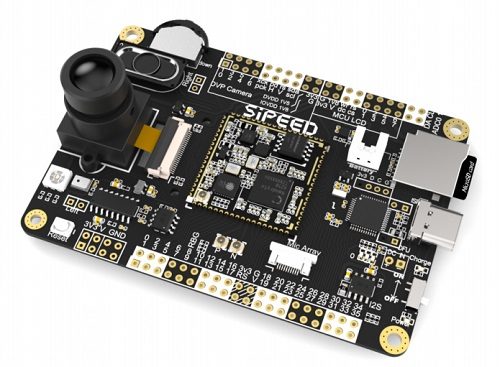
Due to a rapid increase in the number of connected devices, the demand for privacy/confidentiality, low latency and bandwidth constraints has compelled AI models to be trained in the cloud and be run at the edge.
Seeed Studio’s new development, the Sipeed MAIX, a RISC-V 64 AI board for Edge Computing makes it possible to embed AI to any IoT device. The Maixduino offers high performance in a small physical and power footprint, enabling the deployment of high-accuracy AI at the edge. Different from other Sipeed MAIX development boards, Maixduino was designed in an Arduino Uno form factor, with an ESP32 module on board together with the MAIX AI module.
MAIX supports MicroPython, OpenMV IDE, Arduino IDE and PlatformIO IDE for programming and Tiny-Yolo, Mobilenet and TensorFlow Lite for deep learning.
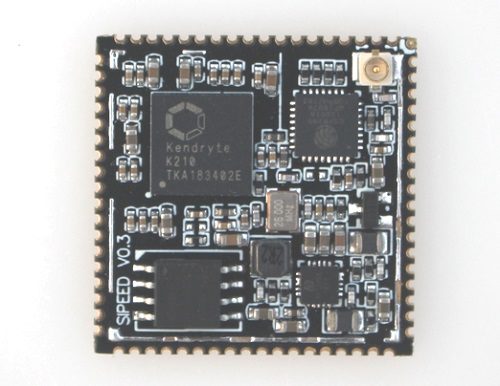
Features
- Equipped with DualCore RV64 IMAFDC, 8MB SRAM, Neural Network Processor (0.25 to 0.5 TOPS, TensorFlow Lite support), APU, hardcore FFT. All this is in a square inch size, 0.3W.
- Powered by a powerful Kendryte K210 dual-core 64-bit RISC-V processor. The board has an on-chip 8MB high-speed SRAM at 400MHz frequency(extendable up to 800MHz).
- The KPU (Neural Network Processor), which has a 576bit width, supports convolution kernels and any other forms of the activation function. It offers 0.25 [email protected], 400MHz. When overclocked to 800MHz, it offers 0.5TOPS.
- Its Audio Processor Unit (APU) has an FFT unit inside and supports up to 8 mics at 192KHz sample rate, thus making it easy to create a Mic Array.
- It’s Field Programmable IO Array (FPIOA) can map 255 functions for all 48 GPIOs on the chip.
- DVP camera and MCU LCD interface allows a secure connection to a DVP camera for running your algorithm and displaying the result on LCD.
Breadboard friendly
For prototyping on a breadboard, the MAIX Bit is suitable for DIYers looking to build their applications. It has a size of 2.5cm x 5 cm (1-inch x 2 inches) and is SMT-able. It integrates the USB2UART chip, auto-download circuit, RGB LED, DVP Camera FPC connector (supports small FPC camera and standard M12 camera), MCU LCD FPC connector (supports 2,4-inch QVGA LCD) and the TF card slot. The core voltage of MAIX Bit can be adjusted from 0.8V to 1.2V. It can also be overclocked to 800MHz.
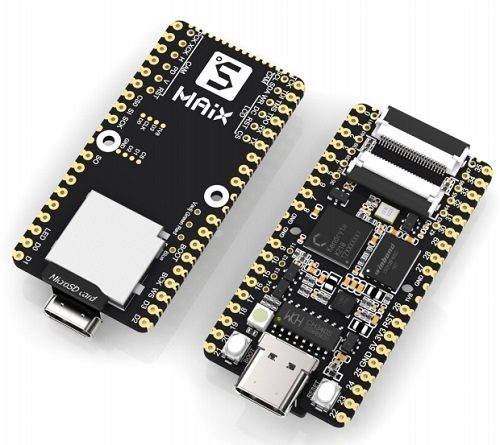
Development board
The M1 Dock or Dan Dock is a development board for the MAIX module that is small, cheap and includes all functions. It is 88mm x 60mm in size with all pins out. The board also includes a standard M12 lens DVP camera, which can be flipped from front to rear.
It has onboard JTAG & UART, based on STM32F103C8 to debug M1 without extra Jlink.
A lithium battery manager chip with power path management function, powers the board and USB.
The board has I2S Mic, Speaker, RGB LED, Mic array connector, thumbwheel, TF card slot and a 2.8 inch LCD.
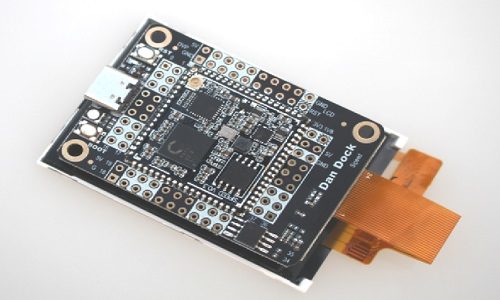
Microphone module
MAIX R6+1 Microphone Array comprising of an I2S mic and 12 RGB LED on board is suited for sound field imaging and beam forming.
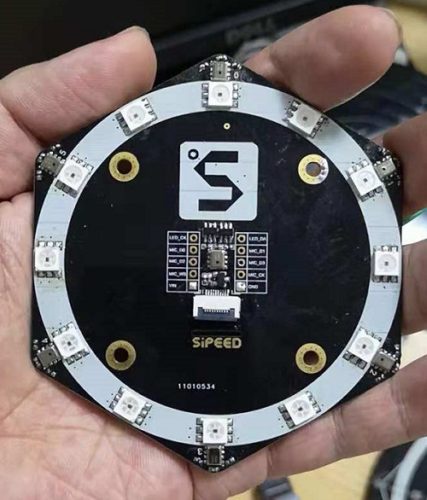
Applications
Despite being similar to Google edge TPU, the Sipeed MAIX acts as the master controller (unlike the edge TPU-based accelerator). This makes it comparatively inexpensive and low powered than AP+edge TPU solution.
MAIX can be used for a growing number of industrial use-cases such as predictive maintenance, anomaly detection, machine vision, robotics, voice recognition and many more. It can also be used in manufacturing, on-premise, healthcare, retail, smart spaces, transportation, etc.
Availability
The Sipeed MAIX Scenario Application Kits will be released towards the end of June.
Source: ChipsNWafers





